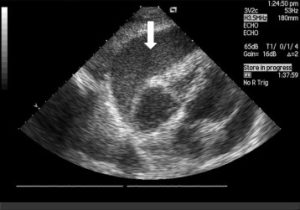Connected devices leveraging AI capabilities are now being deployed in the fight against the leading cause of death in the U.S.: heart disease. Placing the power of AI-enabled cardiac ultrasounds in the hands of nurses and other health professionals is saving lives, revitalizing patient experiences, and contributing greatly to the broadening scope of connected healthcare potential.
Caption Heath Chief Executive Officer Steve Cashman, whose company develops AI-powered software for medical providers, says that his telehealth expertise has led him to believe AI-guided cardiac ultrasounds are bound to chart a similar course to the industry writ large. Like telehealth, patients desiring these ultrasounds will pay for them whether it is covered by insurance or not. Sheer demand, in addition to not needing trained sonography professionals, will lower costs until insurers have no choice but to meld it into existing scan coverage.
To that end, Cashman said, “The insurance landscape is complex. We’re in some pilots with some value-based care providers where they’re taking on risk. I think back a decade ago, and you could go online and pay for a telehealth visit if you wanted to long before your payer or employer or anybody else wanted to." The immediate pay-off will be readily apparent, as insurers cannot simply ignore the potential cost reductions and improved health outcomes offered by this technology.
The market for new connected solutions has never been better, what with the downward trend of in-person doctor visits, a dearth of qualified sonographers, and a huge population of aged individuals. Solutions demonstrating the power and reach of AI such as cardiac ultrasounds are a reassuring harbinger of the future of connected healthcare.























